Red Pepper or Chili Flakes: Which Brings More Heat?
Red pepper flakes add a fiery kick to countless dishes around the world.
Tiny, crushed pieces of dried chili peppers bring instant heat to pizzas, pasta, and many other favorite meals.
The vibrant red specks contain seeds that intensify their spiciness, making them perfect for those who enjoy a moderate burn.
Chili flakes, on the other hand, might include different pepper varieties depending on regional cuisines and culinary traditions.
Many home cooks appreciate how just a small pinch can transform an ordinary dish into something extraordinary.
The versatility of these spicy additions makes them essential ingredients in kitchens across various cultures.
After reading about these flavorful seasonings, you'll be inspired to experiment with new ways to incorporate them into your cooking.
The Overview of Red Pepper Flakes
Red pepper flakes, also known as crushed red pepper, are a popular spice made from dried and crushed varieties of chili peppers, typically including cayenne and other hot red peppers.
They are prized for their bright red color, fiery heat, and slightly fruity undertones that add complexity to dishes.
Commonly used in cuisines worldwide, red pepper flakes are versatile, enhancing everything from pizzas and pasta to soups and marinades.
Their heat level can vary but generally tends to be quite strong due to the presence of multiple chili seeds, which contribute significantly to their spiciness.
Exploring Chili Flakes
Chili flakes come from dried and crushed peppers, made exclusively from a single pepper variety unlike red pepper flakes. Their unique production method ensures consistent flavor and heat level since manufacturers use just one type of chili.
Many popular versions contain Chipotle, Urfa Biber, Sichuan, or Aleppo peppers as their base ingredient. These peppers register as moderately hot on the Scoville scale, making them perfect for spice lovers who prefer enjoyable heat without overwhelming intensity.
The single-source approach gives each variety its own character and reliable spiciness, so you can confidently add just the right amount of kick to your favorite dishes without worrying about unpredictable results.
What Are In Common Between Red Pepper and Chili Flakes
Chili flakes and red pepper flakes come from crushed chili peppers, giving them similar looks and spiciness levels. These small pepper bits can range from quite hot to just mildly spicy on the Scoville scale, with the exact heat depending on which chili variety was used.
Both seasonings share that characteristic red color we all recognize. People often swap them in recipes since they work well in the same dishes.
The good news is that neither option poses health concerns, so you can add that kick of spice to your meals without worry.
Their flavor profiles match closely enough that most dishes won't suffer if you need to substitute one for the other.
Red Pepper Flakes Vs. Chili Flakes: Spotting the Difference
Red pepper and chili flakes might look similar at first glance, but they have several key differences worth noting. Knowing these differences helps you choose the right option for your cooking, whether you want gentle warmth spread throughout or bold heat in every bite.
Here is comparison table to check out.
| Feature | Chili Flakes | Red Pepper Flakes |
| Heat Level | Lower heat; made from one type of chili; may be slightly sweet; good for those who rarely eat spicy foods. | Much hotter; contains multiple pepper seeds, increasing spiciness; can have a fruity taste enhancing other flavors. |
| Color | Bright to crimson red; consistent color; usually seedless for even hue. | Mixed hues due to blended peppers; visible white or light yellow seeds; color intensity not always linked to heat. |
| Uses | Suitable for any meal as a mild spice or topping; less likely to overpower dishes; ideal for beginners with spicy food. | Used similarly but requires caution due to high heat; too much can make food overly spicy and unpleasant. |
| Health Benefits | Boosts immunity with pro-vitamin A and beta-carotene; may aid type 2 diabetes, cardiovascular health, and bone strength. | Raises metabolism for weight loss; rich in vitamins C and B6 with antioxidants; may reduce cancer and heart disease risk; improves digestion and lowers cholesterol. |
Heat Level
Chili flakes and red pepper flakes differ significantly in their heat levels. Most chili flakes contain just one type of pepper, making them milder and sometimes slightly sweet - perfect for people who aren't big fans of spicy foods.
Red pepper flakes, however, pack more punch because they mix multiple peppers and include seeds, which naturally boost the spiciness. Seeds play a major role in how hot these flakes taste; more seeds mean more fire on your tongue.
Beyond just heat, red pepper flakes often bring a fruity undertone to dishes. This special quality not only makes them tasty on their own but also enhances other ingredients they're paired with in recipes.
Color
Red pepper flakes display a wide range of colors due to their blend of different pepper varieties, ranging from deep reds to bright reds, often with visible white or light yellow seeds scattered throughout. This mix creates a speckled appearance with varied tones, sometimes even showing hints of green or yellow.
In contrast, chili flakes typically come from a single type of pepper, resulting in a more consistent bright red to crimson color. Additionally, chili flakes usually have the seeds removed, giving them a uniform and even appearance without the speckled effect seen in red pepper flakes.
Uses
Red pepper flakes and chili flakes have similar uses and can often be substituted. Chili flakes are generally milder, so they won’t overpower your dish.
Both can be used as spices or toppings to enhance flavor. However, red pepper flakes are hotter and can cause a stronger burning sensation if overused, making chili flakes a better choice for those new to spicy foods.
Health Benefits
Red pepper flakes offer many health benefits, including boosting metabolism, which can aid weight loss. They are rich in antioxidants like vitamins C and B6, helping reduce cancer and heart disease risks, improve digestion, and lower cholesterol.
Chili flakes share these benefits and also enhance immunity thanks to high levels of pro-vitamin A and beta-carotene. Additionally, chili flakes may help manage type 2 diabetes, support cardiovascular health, and strengthen bones.
Red Pepper Flakes Vs. Chili Flakes: What Is More Popular?
Red pepper flakes and chili flakes are common ingredients you can easily find at nearby stores or order online if that's more convenient. Money-wise, these spicy add-ons won't break the bank, with only small price differences between brands and types.
No need to worry about which one costs more since they're both budget-friendly options for adding heat to your meals. The quality of peppers used might cause slight price changes, but the difference is hardly worth stressing over when planning your shopping list.
Exploring Alternatives: Chili Substitution Guide
When red pepper or chili flakes aren't in your cabinet, many other spices can save the day with similar heat and flavor. Several alternatives work just as well in recipes, allowing you to continue cooking.
Here are some ideal options.
| Substitute | Ratio for Red Pepper Flakes | Ratio for Chili Flakes | Notes |
| Cayenne Powder | Use ½ the amount | Use ¼ the amount | Cayenne is very potent, reduce quantity accordingly |
| Chili Paste | 1:1 but use sparingly | 1:1 but use sparingly | Chili paste adds moisture, adjust liquid in recipe |
| Chili Powder | 1:1 | 1:1 | Slightly milder and with added spices |
Cayenne Powder
Cayenne powder is much hotter than both red pepper flakes and chili flakes, so you need to use it sparingly when substituting. For red pepper flakes, use about half the amount called for in your recipe.
When replacing chili flakes, reduce the amount even further to about a quarter, as cayenne has a sharper and more intense heat. This makes it a great option for adding serious spice, but be cautious if you prefer milder dishes.
Chili Paste
Chili paste can substitute for red pepper flakes and chili flakes in a 1:1 ratio, but keep in mind that it has a wet, saucy texture unlike the dry flakes. Because of this moisture, use chili paste sparingly to avoid making your dish soggy.
It works best as a condiment or sauce addition rather than a dry spice, adding both heat and a rich, deep flavor to your recipes.
Chili Powder
Chili powder, which is a blend of ground peppers and spices like cumin and garlic, can be used interchangeably with red pepper flakes and chili flakes in equal amounts. It generally has a milder heat compared to cayenne and provides a complex flavor profile due to the added spices.
Chili powder is a good choice if you want to replicate the spiciness of flakes while also adding a bit more depth and aroma to your dish.
Making Red Pepper Flakes and Chili Flakes
Making red pepper flakes and chili flakes involves a similar process, but they differ mainly in the types of peppers used and sometimes in the preparation details.
To make red pepper flakes, ripe red chili peppers are harvested, dried, and then crushed into coarse flakes.
The drying process can be done naturally by air drying under the sun or using dehydrators, which helps preserve the peppers' flavor and heat.
After drying, the peppers are crushed along with their seeds, which contributes to the flakes' heat and texture.
The peppers used are often a mix of varieties, giving red pepper flakes a diverse heat level and a slightly fruity flavor.
Chili flakes are usually made from a single type of chili pepper.
They undergo the same drying and crushing process, but the seeds may be removed to moderate the heat and provide a more consistent color.
The focus with chili flakes is often on retaining a milder, sometimes slightly sweet flavor, making them more approachable for people new to spicy foods.
Got Questions? We’ve Got Solutions
1. Can I use red pepper flakes instead of chili flakes in recipes?
Yes, you can substitute them in most recipes, but red pepper flakes are typically hotter than chili flakes, so you might want to use slightly less to match the heat level.
2. Do red pepper flakes and chili flakes have different health benefits?
Both contain capsaicin which may boost metabolism and reduce inflammation. Red pepper flakes often come from cayenne peppers, which are particularly high in vitamins A and C, while chili flakes vary in nutritional content based on the pepper varieties used.
3. How long do red pepper flakes and chili flakes last in storage?
Both typically last 2-3 years when stored in airtight containers away from heat, light, and moisture. They don't necessarily spoil, but they gradually lose their potency and flavor over time.
4. Which cuisines typically use red pepper flakes versus chili flakes?
Red pepper flakes are common in Italian and American cooking, often sprinkled on pizza and pasta. Chili flakes are staples in Asian, Mexican, and Indian cuisines, frequently used in stir-fries, salsas, and curries.


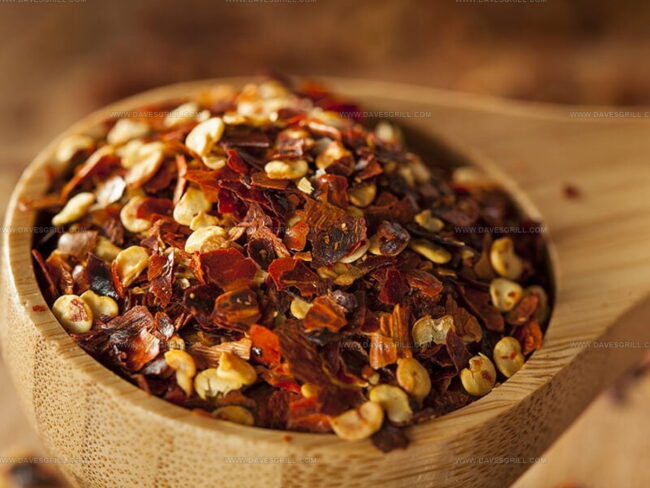

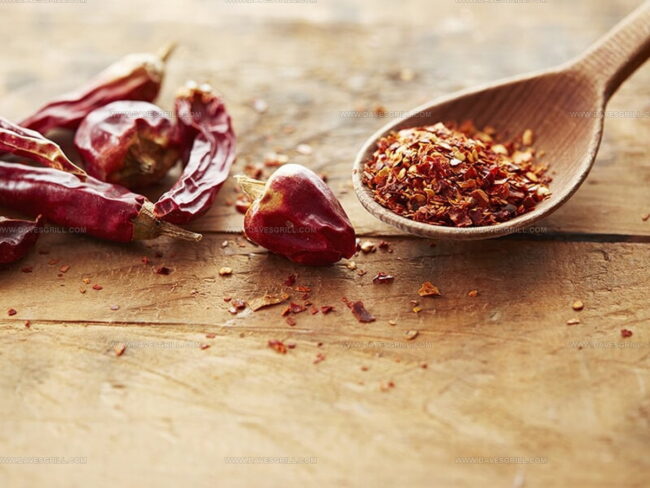
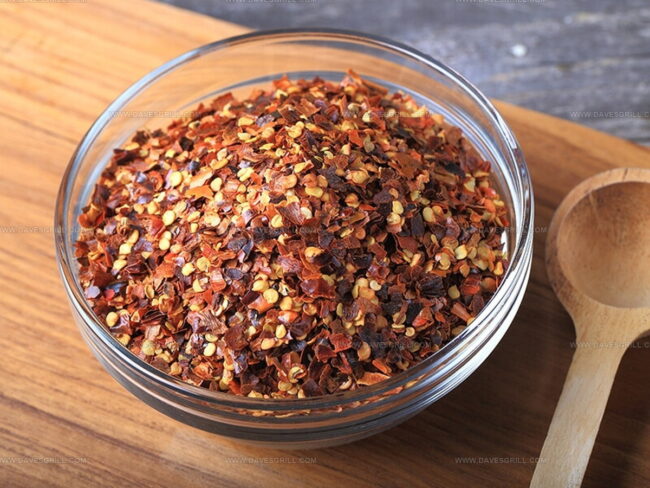
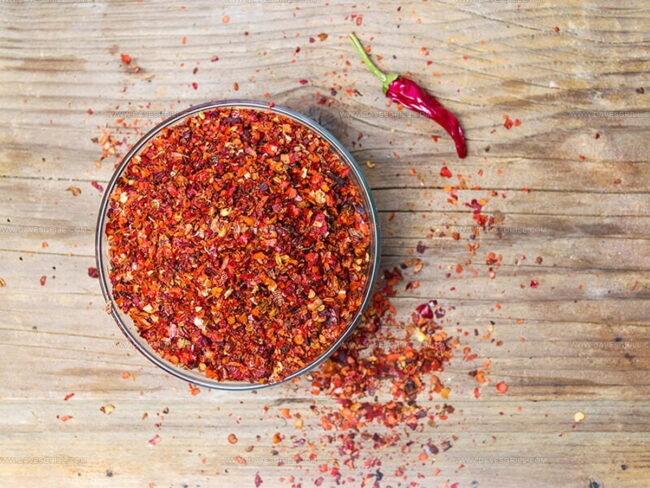

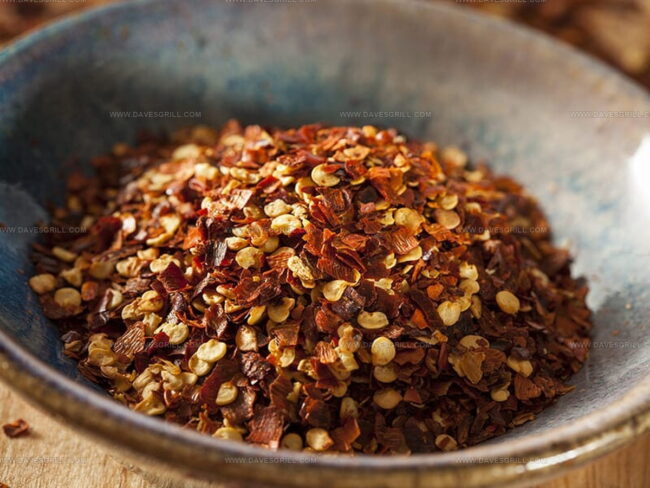


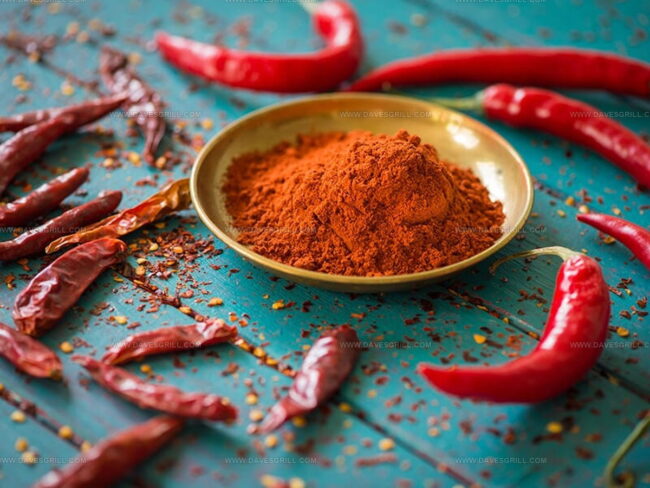
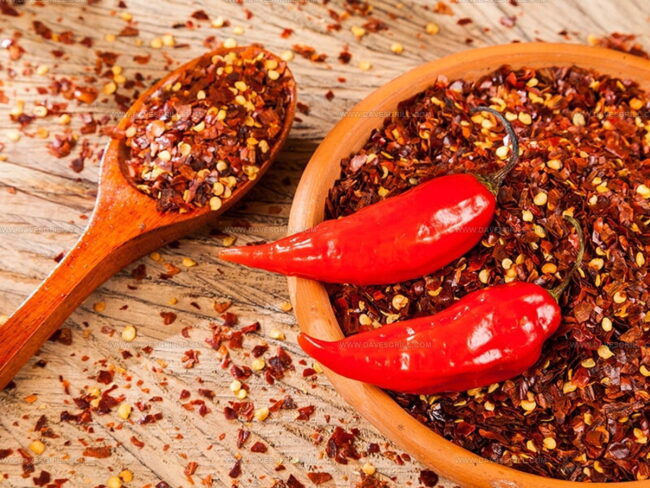
Emily Lawson
Content Creator & Culinary Specialist
Expertise
Education
Oregon Culinary Institute
Diploma in Culinary Arts
Focus: Emphasis on farm-to-table cooking, sustainable practices, and the fusion of global flavors with traditional grilling methods.
Emily Lawson is the content creator at Daves Grill, turning tasty ideas into clear, easy recipes. Based in Portland, she trained at the Oregon Culinary Institute and loves cooking with fresh, seasonal ingredients, especially grilled veggies and global flavors.
Emily mixes food writing with hands-on cooking to bring you recipes that feel fun, not stressful. Her goal is to make every dish simple, flavorful, and worth coming back to. Together, she and Dave serve up real food, one recipe at a time.